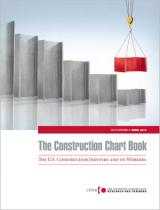Construction Statistics
In 2016, 10.3 million U.S. workers were employed in construction, a 16% increase after construction employment bottomed out in 2012.1 The Bureau of Labor Statistics (BLS) expects construction employment to increase over the next eight years.2 Small businesses with fewer than 20 employees account for 92.5% of all construction establishments, and 41.4% of all construction employees work in small businesses.3 Falls remain the leading cause of work-related deaths in construction, accounting for about one-third of the total number of fatalities in this industry.1 Although fatal falls followed the overall injury trends, fall deaths rose faster than overall deaths in construction during the economic recovery that started in 2013.1 Between 2011 and 2015, the number of fall fatalities in construction increased by 36.4% from 269 to 367, compared to a 26.1% increase in overall fatalities.1 The burden of injuries from falls on the same level in construction is sometimes overlooked, yet in 2015, almost six times as many fatal falls occurred in construction compared to manufacturing, the industry with the second highest number.1 As far as nonfatal fall injuries, in 2010, there were approximately 18,130 nonfatal injuries to construction workers as a result of falls.4
Nearly half of all deaths on construction sites occur in companies with ten or fewer employees or among those who are self-employed.5 Construction workers were more likely to be male (90.0% versus 53.0%), Hispanic (29.9% versus 16.3%), and foreign-born (26.9% versus 18.1%) than the general U.S. workforce.6 In 2012, 222 Hispanic construction workers died on the job – a 13% increase from 2011, compared to a 9% increase for the overall construction industry. Between 2011 and 2012 the increase in the number of fatalities among older construction workers aged 45+ was 115% compared to 2% among their younger counterparts.7
CPWR–The Center for Construction Research and Training Construction Chart Book
The fifth edition of The Construction Chart Book presents the most complete data available on all facets of the U.S. construction industry: economic, demographic, employment/income, education/training, and safety and health issues, plus much more. This new edition features more charts and topics not covered in previous editions, such as green construction, employment projects, unemployment and re-employment rates, and risks of falls, MSDs, respiratory hazards, and hearing loss by trades.
NIOSH Pages
- Page last reviewed: August 30, 2017
- Page last updated: August 30, 2017
- Content source:
- National Institute for Occupational Safety and Health Office of the Director


 ShareCompartir
ShareCompartir
